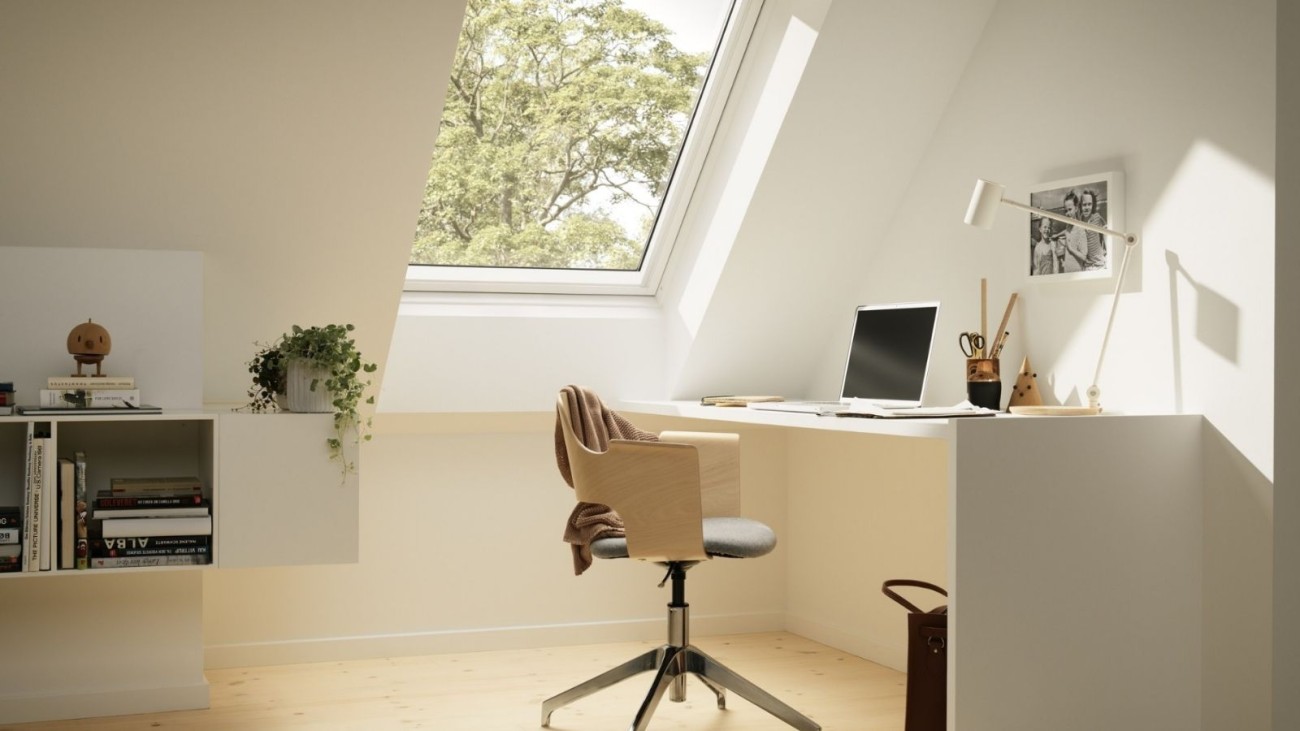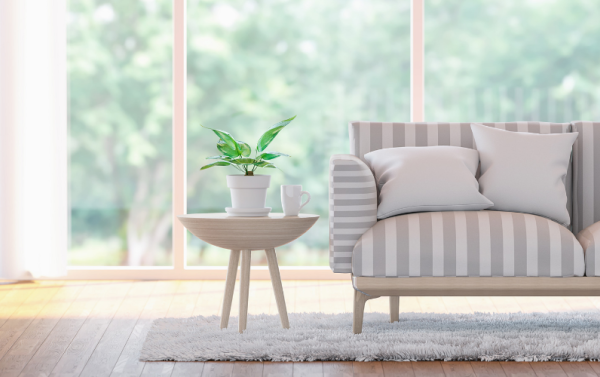How to design a comfortable home office
Covid-19 has changed the way we work and live but post-pandemic it could mean more homeworking is on the cards.
We’ve probably already experienced how not to be comfortable – with many people in the past year squatting over kitchen tables, squinting at laptops while listening to a neighbour home schooling their children.
When it comes to designing a home the space needs to perform on so many levels and there is an increasing demand to create a high-performing one which provides us with all kinds of comfort levels.
Feeling good in a building is about having the perfect amount of light, the proper level of sound and the ideal temperature. It is about design and technology, beauty and safety, efficiency and sustainability. A good living place is adaptable to us, rather than the other way around. Self-builder John Pryer constructed his own Passivhaus home using a fabric-first approach to deliver high levels of acoustic and visual comfort, as well as maintaining a comfortable temperature and the best indoor air quality possible.
Buildings have the potential not just to protect people from negative aspects of the world outside – such as noise, weather and pollutants – but also to make us feel happier and enable us to live, work and play in healthier internal environments.
Here’s four key areas to consider when it comes to considering your home office design.

Natural light
Thoughtful design can elevate any self-build and maximising natural light in your office space can enhance your wellbeing. The orientation of your home and its layout inside all contribute to this so maximising every corner can make a real impact.
One of the biggest factors affecting the amount of natural light that will enter your home office, is the orientation of your house on the site itself. The path of the sun throughout the day has to be carefully considered when designing the layout of your home and the position of any windows.
Sun-filled rooms can provide a positive effect on our mood and performance so consider big windows for natural light and solar gain. However, do think about screen glare and don’t overdo it so that your office overheats.
Think about nature surrounding your build – windows can help to invite pockets of the outside, in. Creating a ‘painting’ or picture to the outside world can boost our wellbeing and productivity.
What kind of solutions are available?
Saint-Gobain Glass manufactures some of the UK’s most energy efficient glass including Planitherm, a range of modern, high-performance glazing for the home made by Saint-Gobain Glass. Planitherm glass doesn't just meet UK energy standards and Building Regulations, it exceeds them: offering not only better efficiency than traditional double glazing.
What are the benefits of Planitherm glass?
- Improved energy efficiency
- Enhanced security
- Noise reduction
- Reduced overheating
- Furniture fade protection
Learn more about how to make the most of your plot to get the best performing building, through things like building orientation and designing for acoustic comfort.

Acoustics
The noise in our homes can range from comfortable to annoying or, in the worst cases, so intrusive that they become dangerous for our health and wellbeing.
When you’re squirrelled away in your office you want to escape the noise of the modern home so when it comes to creating a comfortable home every self-builder needs to consider the importance of soundproofing and how acoustics can improve your self-build.
Acoustic comfort is very important when considering our work spaces whether it be to deaden sound pollution from outside, such as a busy road or air flight path, or to reduce the transmission of sound through internal walls and floors.
Research has shown that well-designed sound environments help to improve concentration and enable better communication.
When it comes to design, think about the position of your office. Placing it at the back of the house, for example, away from sources of noise like traffic or away from living spaces. Do consider using soft furnishing to absorb noise, such as rugs on hard flooring.
When it comes to the build think about your materials and how you can block external noise from entering your self-build. Noise tends to enter through weaker links in the external envelopes such as doors and windows. Any penetration in a wall, such a plug socket or light switch, can provide a weak point for sound to travel through. Think about where you are placing these and consider the installation of acoustic glass mineral wool insulation during design stages.
What kind of solutions are available?
Insulation is a fundamental part of a home. By liaising with a reputable manufacturer, such as Isover, self-builders can access a range of specialised insulation products, with both excellent thermal and acoustic properties that can exceed the Building Regulations and help achieve a higher standard of construction.
Plasterboards and wall rendering can provide excellent protection against airborne or impact noise for wall, floors and ceilings.
Acoustic ceilings and wall panels and interior lining can improve room acoustics.
Discover five ways to improve the acoustics in your self-build from architect Gareth Boyd.

Indoor air quality
Evidence suggests that a constant supply of clean fresh air (free from pollutants and bad odour) makes for a more productive space. Although there is no evidence that unpleasant odours are linked to adverse health effects, scientific research shows that they can cause mental distraction and may have a negative impact on mood and stress levels. The best way of improving indoor air quality is to work to reduce pollution from source, while improving ventilation, and purifying the air.
In the UK, the National Institute for Health and Care Excellence has developed guidelines for indoor air quality in UK homes. They advise builders and developers to adopt a whole-building approach to heating and ventilation, balancing indoor air quality with standards for energy use.
Consider designing ventilation to reduce exposure to outdoor air pollution, for example, with windows that face away from busy roads and do include provision for removing indoor air pollutants in designs, for example, windows that open and extractor fans that extract to outside.
What kind of materials could you use?
- Insulation, dry lining, facade, wall or floor covering, membranes and high performance windows and doors providing superior airtightness.
- A Mechanical Ventilation Heat Recovery System (MVHR) can provide a constant temperature by allowing fresh filtered air into a building while retaining most of the energy that has already been used in heating the building. This kind of system can extract and recycle any warmth in the outgoing air by transferring it into the new supply - optimising the climate in your home.
- Products, such as British Gypsum plaster and plasterboard with ACTIVair technology, can help to decompose certain Volatile Organic Compounds (VOCs) such as formaldehyde, which lowers the risk of them entering the air.
- Low-dust screeds and adhesives can help to improve user-comfort during installation.
Find out more about the importance of ventilation in your self-build from architect Gareth Boyd.

Thermal
Maintaining a warm, draught-free and dry home office without the need for radiators in each room and using very little energy – that’s what thermal comfort is all about.
A poorly insulated room could increase your energy bills as heat is lost through gaps in windows, doors, roofs and walls.
Have you considered the orientation of your build? For example, a south-west facing elevation will receive direct sunlight in the late afternoon. Take advantage of solar gains when designing your home.
Sourcing the right materials can lower energy bills, help you comply with energy efficient regulations and ensure that heat stays in the home. A balanced thermal environment is essential to occupants feeling comfortable – it can offer benefits that really enhance the building you live in such as aiding concentration while you work.
What kind of solutions are available?
- Double or triple glazing can keep the heat your home office or block it out depending on the climate. It can also keep noise out (acoustic) making it a comfortable space to inhabit without unwanted sounds entering the home.
- Insulation, such as mineral wools, can help to reduce heat loss or summer heat gains.
- Plasters and plasterboards can improve thermal comfort, as well as smart membranes to improve airtightness and manage moisture.

